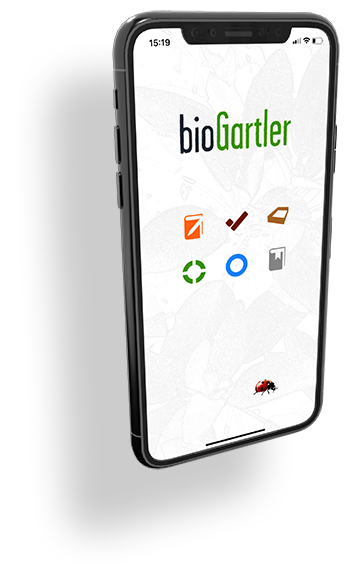Genera
Collect information about genera you have and are planning, and only those that interest YOU.
You can enter the parent family, the best location, the soil conditions, the optimal fertilizer, good and bad predecessors and neighbors, as well as information from friends, tips from Facebook or other social media channels, from the neighbor or from the gardener. Whatever you think is important!
First you see the list view to find the genus you are looking for faster. Click/touch on the blue arrow to get to the detail view with all information. The line of the currently selected entry is highlighted yellow.
What you enter where is labeled and clearly arranged. So every information has its place and can be found very quickly. In the field "Sources" all sources (books, PDFs, pictures etc.) that you have linked to a genre are automatically displayed (see under Sources). In the field "Varieties" all the varieties you have already created for this genus will appear (see under Varieties). If you click on the name of the source or the variety, you will be taken directly to the linked details page.
In the field "ATTENTION" you enter what is especially important for this genus (e.g. "light bucket" for salads). In the field "Fertilizer" you can enter whether the genus is a low, medium or high emaciator, because this is decisive for fertilization, and of course also which type(s) of fertilizer a plant prefers.
All information of a genus is of course also valid for all its varieties. They are stored here, but the most important ones are also displayed for the corresponding varieties of this genus and can be edited there.
IMPORTANT
On the details page of the genus, the fields Info, Attention, Fertilizer, Predecessor, Neighbor and the timeline are synchronized with the corresponding fields of the varieties and can be edited under genus as well as under varieties. All changes of these fields in the genus also apply to all varieties you have created for this genus!
The terms
"Genus" is the name of a group (which you can name freely)
"Varieties" are the parts of this group (but you can also name them freely)
Example
Genus: Tomatoes
Varieties: Green Zebra, Resi, Moneymaker, San Marzano et al.
More about the possibilities to name genera and varieties can be found here.
A list of the genera you have already created will appear in other areas when you select the field "Genus". If you have already created many genera, there is a search function so that you do not have to scroll too much.
Timeline
If you move the detail screen on the tablet a little bit upwards (wipe left 4 times on your smartphone), you will see the timeline where you can enter from when to when you want to move forward, plant in the field or sow directly (or should). A month is divided into 4 sections, but these are not necessarily weeks (that wouldn't always be correct), but Beginning, before the middle, after the middle and end of the month.
If you want to mark 1 box, tap it, it will turn yellow, tap it again, a pop-up window will open where you can select the desired entry (why you have to tap twice is explained in the next paragraph ;) The possible entries (preparation, growing, planting etc.) have different colors to distinguish them in the timeline.
If you want to mark a longer period (e.g. beginning to end of March), first tap on the first box of the period (it will turn yellow) and then on the last desired box, then the pop-up menu will open ...
If you create a new genus, the timeline is empty. The entries here refer to the genus, but are also displayed for all the associated varieties. In the list view of the varieties on the tablet you have an overview of your garden year and what to do.








Comments powered by CComment